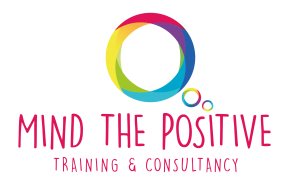Attention to ‘Attention’

“Watch out; be careful; beware…” are typical attentional directions we have all been raised with, hearing from our parents, teachers, or peers. We have been told to mind what there is around, in front, or at our back. Why? To keep us safe or away from harm! So, basically, we were told to have our attention on a particular direction, for a particular purpose.
Another typical one is the “Mind the Gap” announcements at the London Tube. Each time doors open and close, the announcement would say, “mind the gap between the train and the platform.” The purpose is to remind people to keep their attention on their steps. It may certainly have a more distinctive significance than being ‘cautious’. Simply it directs passengers to draw their attention to a particular point, for a particular purpose.
Mind what your mind minds at!
With my research on mindfulness, I began ‘minding on what my mind was minding at’. That is, trying to figure where my attention was in daily routine. I came to explore new meanings and perceptions over the essence of ‘attention’. The more findings arose more questions that led to a common matter: attention to ‘attention’! Where is our attention, when it is not directed or reminded via an external voice? Where is our attention in general? Is it where it is supposed to be? Where is it supposed to be anyway?
Seems highly abstract and complicated? Let me explain in another way. Best piece of work usually comes out when the focus of attention is purely on the activity one is busy doing. That is the state when the mind is occupied with thoughts or ideas related to the particular activity. In this point, the mind and body are occupied in the same activity, where ‘being and doing’ are the same. What do you think happens when being and doing are not the same? That is when most mistakes and errors come out. If not due to lack of knowledge, they most likely to emerge for careless or inattentive focus on the activity. The mind may be occupied in a non-related else activity, while the body is busy doing.
Mindfulness is directly related to our focus of attention on a particular activity or a momentary experience. When one’s mind is aligned with the activity at hand, is in a mindful state! When the mind is inattentive and elsewhere, hence not aligned with the activity, the person is in a mindless state. This may sound as ‘lack of mind’. Contrary; it is lack of focused attention with a ‘full’ mind. Such states as ‘mind-fullness’ or ‘mindlessness’ yield various consequences: being more prone to careless mistakes and errors, confusion in decision making and creativity, frustration, stress, burnout, and at the farthest extreme depression.
Anchor the attention to present moment!
A state of mindfulness fosters a calm, organized, and peaceful state of mind, which boosts cognitive, psychological, and physical functioning. To enable that, focus of attention needs to be aligned with the activity at hand; where the doing and the being are the same. In other words, we anchor our attention to the present moment and action. Anchoring to where, which action then? Any daily routine activity is good enough: washing the dishes, brushing teeth, knitting, gardening, painting, or ironing.
Anchoring our attention to our activity has various benefits. From an outcome perspective, we may end up having thoroughly cleaned the teeth, dishes, etc. From the process perspective, we end up with an auto-control mode of behavior, against automatic/autopilot one. Autopilot is a behavior that takes place without awareness or our conscious intervention, especially involving our routines. Living on autopilot mode is very natural and common: driving from home to work, getting dressed, turning on our computers, cooking, or watering plants, etc.
For instance, have you ever happened to get to a place, unaware, and all of a sudden, surprisingly asking yourself “why have I come here”? Or, for the first time noticed the presence of an object that has been there for long time, and ask, “has this been here before”? Just think, when was the last time you have noticed or observed the little details around you… or experienced life with greater sense of awareness and perception, into its tiniest little details…
Life’s joys and beauties, in fact, all lie in the little details hidden behind our attention; the smiles of people walking by, different grades of autumn colors, tiny heartbeat sounds of a baby, or positive happifying moments within a stressful work day. What I learnt, is that we suffer the most –psychological, physical or mental, from not letting our minds focus on what present moment provides us. Our mind is way too busy focusing on what is not available at present time and place. Instead of paying attention to our present moment experiences, we choose consciously or unconsciously to pay attention to past experiences or future expectations. That state of being simply takes us farther away from fully enjoying life, and the miraculous joys of life.
For a short time, would you want to perceive the world around you with a totally different look? How about getting yourself out of your routine, the auto-pilot mode, and take a glance? I invite you to pay your attention on your attention… a deliberate, purposeful and curious attention…
Close your eyes. Take a few deep inhales and exhales. Before opening your eyes, let go all the things you know of around you. Open your eyes as if you are opening them for the first time. Look around you… observe… explore every little detail, with curiosity… give enough time and attention to each… What do you see? How do the colors seem to you? What sort of differences do you notice? Let your attention and curiosity on the tiny little details; pay enough time to find more new details, new findings, and new explorations. You may find, or you may not! Exploring the present details what really counts as joy of life. What matters is not finding the differences, but being aware of the brightness, liveliness, and joyous details of present environment.
This small practice of attention is one of the meditational practices of mindfulness, which fosters our cognitive capability for catching details, creativity, memory, as well as reasoning and decision-making in daily life. It is a simple but a powerful method to anchor our attention to the present moment. It is as well quite practical, easy to apply anywhere and anytime; at home, at your door, in your office, your frequented place, and highly familiar or unfamiliar places. All you need is to mind what your mind minds at; anchor your attention on a particular place, object, or activity; observe and explore with curiosity; and gently let your awareness take you towards its direction. Enjoy!







Leave a Reply
Want to join the discussion?Feel free to contribute!